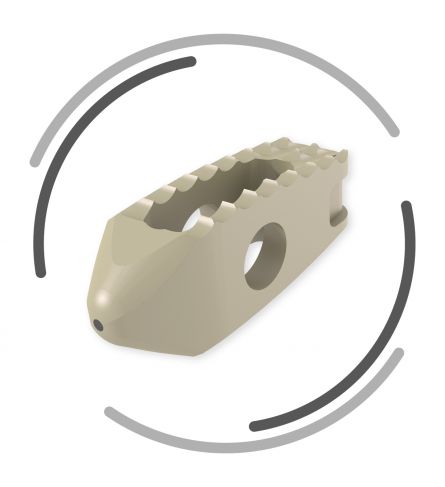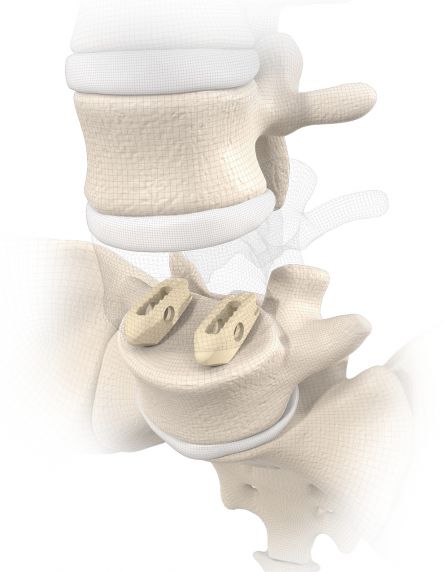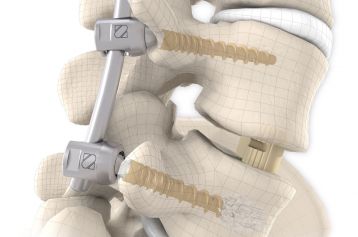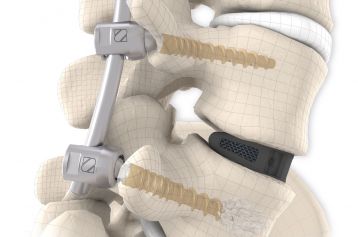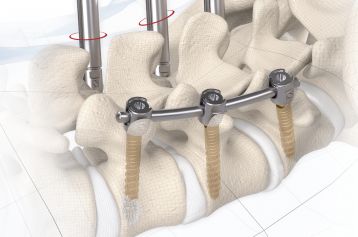TASMIN R
Request product
start request
Posterior lumbar interbody fusion (PLIF) is today the gold standard in the treatment of degenerative disc disease. Most recently, surgical restoration of the sagittal and coronal profile in particular has gained in importance. Whilst physiological curvature of the spine allows for even load distribution, degenerative processes may result in misalignment. This can be accompanied by adaptive changes and non-axial stress in the adjacent spinal segments reaching as far as the pelvis and lower extremities.
TASMIN® R is a refined response to restoration of the alignment: with its rotational technology the TASMIN® R cage is small when implanted and thus minimises the impact on the ligaments. When rotated 90 degrees in the interbody space, it then expands to its full size and permits restoration of physiological lordosis, with minimal impact. Due to the lack of ligamentary over-distraction, compression anchorage can be achieved, leading to improved fusion.
TASMIN® R is placed by a PLIF (Posterior Lumbar Interbody Fusion) approach in the L1 – S1 spinal region and should be inserted in pairs. The implants can be inserted using standard or rotational technique. The option of rotation enables restoration of the physiological lordosis without over-distraction of the ligaments during implantation.
The large fenestration in the implant permits the cage to be packed with natural or synthetic bone graft substitute such as KAINOS® Inject.
The inserted cages, combined with additional posterior instrumentation, lead to immediate biomechanical stabilisation. This establishes the ideal conditions for vertebral body fusion. The large selection of implants provides for a high degree of intra-operative flexibility and ensures restoration of the intervertebral space. In addition to plane-parallel implants, the TASMIN® R cage is also available in different lordotic angles.
Implantation using standard or rotational technique
Open implant design
Flattened implant apex
Smooth lateral surfaces
Biconvex design with or without lordosis
Proven SIGNUS toothed cage design
Tantalum markers
PEEK-OPTIMA® is a biocompatible polymer offering a number of benefits in this indication. In its strength it is comparable to cortical bone and due to its excellent MRI compatibility permits artifact-free follow-up examinations.
The tantalum markers are used with x-ray or CT during and after surgery to check that the implant is correctly positioned.
Here you get to the eifu of TASMIN R.



